Although driving in Europe is a not too different from driving in America, there are some important differences you should be aware of.
Right-Hand Traffic
In Europe you drive on the right side of the road. Only exceptions are some island countries (UK, Ireland, Malta, and Cipro).
Metric Units
We are sorry for our U.S. friends, but in Europe you have to get accustomed to kilometers. 😉
This is the correct conversion:
- 1 mi = 1.609 km
- 1 km = 1000 m = 0.62 mi.
But you don’t actually need to do any calculation while driving, just follow the tips below.
- Speed — Since your speedometer will show kilometers, just respect the limits (more or less…) and enjoy your drive.
- Distance — For an easy assessment of distances displayed on some road signs, just consider that:
- 1 km (or 1000 m) is roughly half mile
- 500 m is roughly a quarter mile
- 100 m is roughly 300 ft.
Lane Selection
If there is more than one lane on your side of the road, by default you drive on the rightmost lane. Exceptions:
- before junctions, you choose the proper lane for your route
- in heavy traffic, you can use any lane.
Passing
To pass, you move to the next lane on the left, you pass and then you go back to the right lane. If there are more vehicles to pass, you can stay in the passing lane, but eventually you must go back to the right lane.
It is strictly forbidden to move to the right to pass any vehicle, unless that vehicle is clearly going to turn left at a junction or into a gas station or a private property.
Speed Limits
This is the European standard speed limit sign.
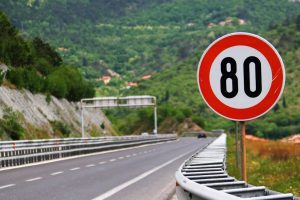
General speed limits are slightly different in each European state.
| Speed limits in km/h | Austria | France | Italy | Portugal | Spain | Switzerland |
|---|---|---|---|---|---|---|
| In Town | 50 | 50 | 50 | 50 | 30 to 50 | 50 |
| Out of town | 100 | 80 | 90 | 90 | 90 | 80 |
| On highways | 130 | 90 to 130 | 90 to 130 | 100 to 120 | 120 | 100 to 120 |
Traffic Lights
In Europe, you cannot turn on red, unless there is a green arrow-shaped light showing the allowed direction.
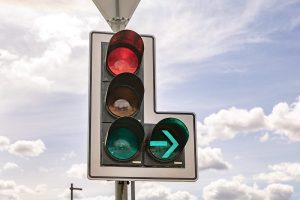
Right-of-Way
The “Stop” and “Yield” sign have the same look and meaning all over the world.
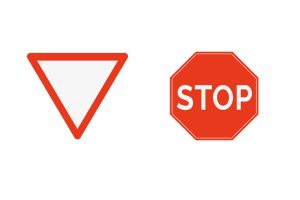
In Europe, the vehicle coming from the right has by default the right-of way even if it is not the first to arrive, and this applies also at T-junction.
Roundabouts
Here are the rules to use them.
- When you approach a roundabout, you have to yield.
- When you are inside a roundabout, you have the right-of-way; use the turning light if you change lane.
- When you leave the roundabout, you must use the right turning light.
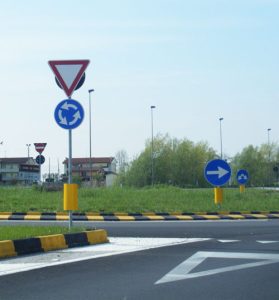
Some roundabouts are very small. In such cases, you use the turning lights as if it were a normal crossing, i.e. left if you turn left, right if you turn right.
Pedestrian Crossings
Pedestrians have the right-of-way not only when they are on the zebra crossing, but even when they are still on the sidewalk and show the intention to cross.
Secondary and Mountain Roads
Highways in Europe have been build from the Fifties on and are more or less like in America. Instead, secondary roads are generally much older, therefore lanes are narrow and turns can be very tight. This is especially true in the mountains, where tight and steep switchbacks can be found.
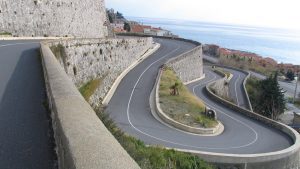
Local Drivers’ Behavior
In many Southern European countries — including Italy and Portugal — drivers tend to care much less about lanes than in Central Europe, therefore it is a good idea to be particularly aware of what happens on your sides.
In the same countries, most locals tend to be rather pushy: if they see you hesitant at a junction, they tend to pass even when they have not the right-of-way, and in heavy traffic you might be stuck there for minutes. The best way to deal with these people is being pretty assertive. If you have the right-of-way and they seem not to care, check that they have seen you and have enough room to yield, then go!
Speed Cameras
In Europe there are lots of speed cameras. If you are cought while speeding, usually no policeman stops you, you will rather receive the fine later via mail (up to two months or so).
Speed cameras are generally hidden. A remarkable exception is Italy, where speed cameras must be visible and marked with special signs, otherwise they are considered illegal. This peculiar rule is due to the fact that a large number of speed limit signs are frustratingly low and therefore largely ignored. In such a situation, hidden speed traps would result in popular uprisings.
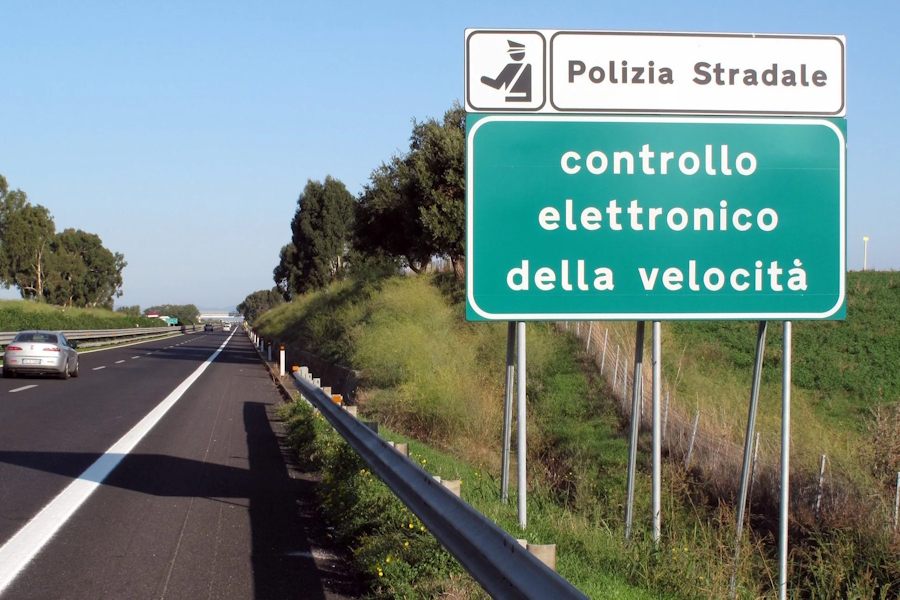
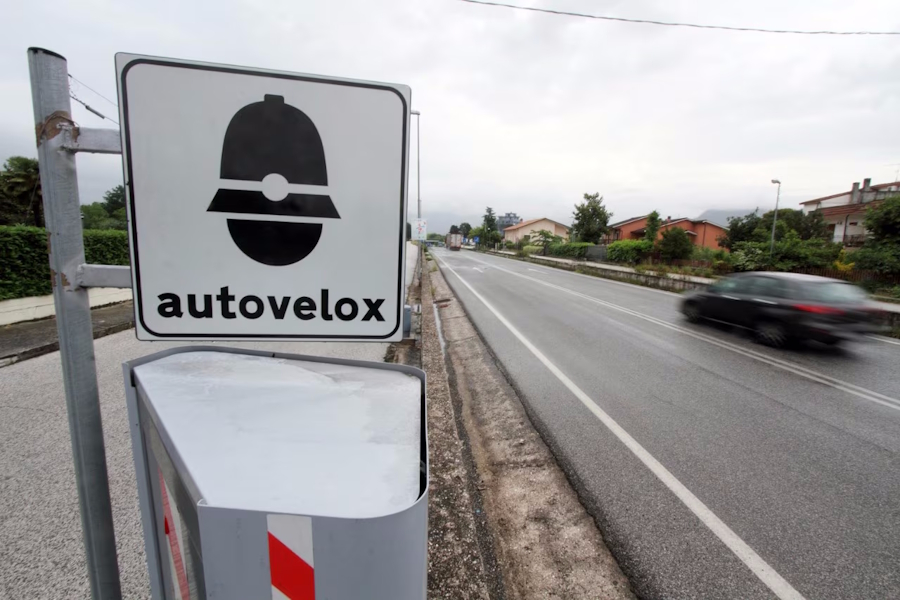
- A few hundred meters before the camera, you find the sign “controllo elettronico della velocità” (electronic speed check).
- The camera is marked with a policeman icon.
Alcohol and drug
The maximum blood-alcohol level admitted is 0.5 g/l. One beer or one standard glass of wine (125 cc = 4 fl. oz.) are usually ok for a man, but they can easily be illegal for a woman.
Driving under the effect of any drug — except tobacco — is strictly prohibited.
Fines for DUI (driving under the influence) are extremely expensive and you can be banned from driving in the country and, in worst cases, be arrested and sentenced as a felon.


